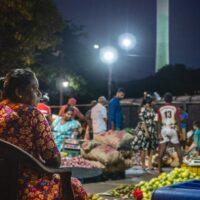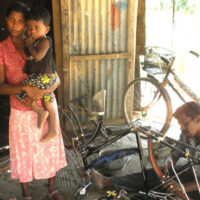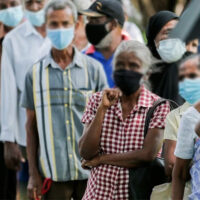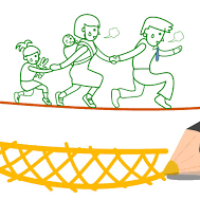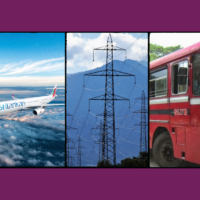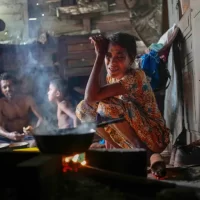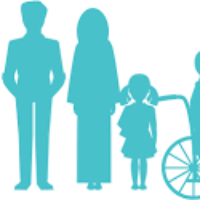Multidimensional Household Livelihood Vulnerability: Ex-post of the Economic Crisis in Sri Lanka
Varangana Ratwatta, Nulukshi Dissanayake and Hemesiri Kotagama
CEPA Researchers
- Sri Lanka was impacted with an unprecedented economic crisis in 2022 causing livelihood vulnerabilities, where 70% of the incomes earning households have reported of a decrease in income post-economic crisis.
- Estimated probabilities of a household losing income due to the economic crisis are: 54% if household head; had no education above ‘ordinary level’, 55% if unhealthy, 77% if had no government employment, 53% if not received Samurdhi welfare benefits.
- The results affirm that individuals with secure employment, formal education, possessing assets and receiving welfare benefits are less vulnerable to economic crises and vice-versa.
- Thus long-term policies ought to be oriented to improve education, to provide secured employment and in the short-term to provide welfare benefits.
- The study developed a methodology to estimate a Livelihood Vulnerability Score for each household using socio-economic characteristics of the household. By utilizing estimated household livelihood vulnerability scores and implementing a predefined threshold, vulnerable households could be identified, facilitating the implementation of targeted welfare benefit interventions.
Sri Lanka was impacted with an unprecedented economic crisis in 2022, due to a complex combination, of exogenous and endogenous factors. Exogenously, the Covid plague negatively affected the Sri Lankan economy as much as economies of other countries. Sri Lankan economy was endogenously vulnerable due to its long-term weakness in national credit management and short term issues of public income management. Sri Lanka had achieved a 4% poverty rate pre-economic crisis (2019), from over 20% poverty rate in 2002. However, the poverty rate spurted to nearly 30% a year after the economic crisis (2023). This phenomenon of rapid and unprecedented increase in poverty is largely due to livelihood vulnerability of those close to the poverty line. In addition, the agricultural sector became vulnerable due to hurried implementation of an agricultural policy to ban inorganic fertilizer (and other agro chemicals) imports with expectation of total conversion to “organic farming”. According to a survey conducted by UNDP and analyzed by Centre for Poverty Analysis (CEPA), among 25046 representative household in Sri Lanka (Citizen Survey, 2023) 70% of the income earning household have reported of a decrease in income post-economic crisis (CEPA Blog, 2023). Of those household reporting a loss in income due to the economic crisis nearly 24% are self-employed in agriculture and about 8% are casual workers in agriculture. A needs assessment by the International Red Cross and Red Crescent Societies reports (2022) “of more than 2,900 households in 11 of the country’s 25 districts has found that 96% have been affected by the current crisis in some way, with food insecurity, health, livelihoods, and nutrition among the top concerns. Deteriorating physical safety and security, as well as violence against women and children also stood out”. According to World Food Program’s latest (December 2023) Household Food Security Survey, “33 per cent of households were facing acute food insecurity in December 2022, with 68 per cent of people resorting to food-based coping strategies such as limiting portions and reducing the number of meals eaten per day. Particularly affected are households in the estate sector as well as female-headed households, where 38 per cent and 37 per cent are food-insecure respectively”. Thus, Sri Lanka, faces the challenge of livelihood insecurity due to the economic crises. In the aftermath of such crises, certain households are particularly vulnerable to losing their means of sustenance and facing increased economic hardship. Understanding the factors that contribute to livelihood vulnerability post-economic crisis is crucial for effective policy formulation and targeted intervention strategies to support affected populations.
This article presents an empirical analysis aimed at identifying livelihood vulnerable households in Sri Lanka following a recent economic crisis. Livelihood vulnerability can be understood as the degree to which households are exposed to unexpected drastic changes in natural, social, political, and economic factors and are confronted to cope with. Livelihood vulnerability due to the economic crisis is operationally defined in this study as a drop in household income caused by the economic crisis. Utilizing household survey data collected in the aftermath of the crisis by UNDP Citzens Survey with a representative sample of 25040 households, the study employs statistical methods to discern key factors contributing to livelihood vulnerability. Through a logistic regression framework, the study seeks to shed light on the socioeconomic characteristics and circumstances that render certain households livelihood being more vulnerable, in the wake of crises.
The economic crisis has posed a 71% probability (vulnerability) for a household to loose income. The probabilities of a household losing income due to the economic crisis are: 46% even if household head had education above ‘ordinary level’, 45% even if healthy, 29% even if had a monthly paid employment, 47% even if received Samurdhi welfare benefits. Conversely, probabilities of a household losing income due to the economic crisis are: 54% if household head had no education above ‘ordinary level’, 55% if unhealthy, 77% if had no government employment, 53% if not received Samurdhi welfare benefits. The results affirm that individuals with secure employment, formal education, possessing assets and receiving welfare benefits are less vulnerable to economic crises and vice-versa. Thus long-term policies ought to be oriented to improve education, to provide secured employment and in the short-term to provide welfare benefits.
The study developed a methodology and estimated a livelihood vulnerability score for each household using socio-economic characteristics of the household (Figure 1). It’s observed that about 70% of the households have a high livelihood vulnerability score of 0.8 and more. By utilizing estimated household livelihood vulnerability scores and implementing a predefined threshold, it becomes feasible to identify vulnerable households, facilitating the implementation of targeted welfare benefit interventions.

Figure 1 Distribution of livelihood vulnerability scores among households
References
Sri Lanka Red Cross. Sri Lanka’s vulnerable forced to risk “a pathway to destitution”. Reliefweb. [Online] October 14, 2022. [Cited: January 4, 2024.] https://reliefweb.int/report/sri-lanka/sri-lankas-vulnerable-forced-risk-pathway-destitution.
Sri Lanka: Food Security Crisis – 2022-2023. Reliefweb. [Online] December 29, 2023. [Cited: January 4, 2024.] https://reliefweb.int/disaster/ce-2022-000199-lka.
Varangana Ratwatte, Nulakshi Dissanayake, Jayani Kokila and Hemesiri Kotagama. Centre for Poverty Analysis Blog. Quantification of Household Income Vulnerability due to the Economic Crisis in Sri Lanka. [Online] 2023. https://www.cepa.lk/blog/quantification-of-household-income-vulnerability-due-to-the-economic-crisis-in-sri-lanka/.
